50+ Sample Library Budgets
-
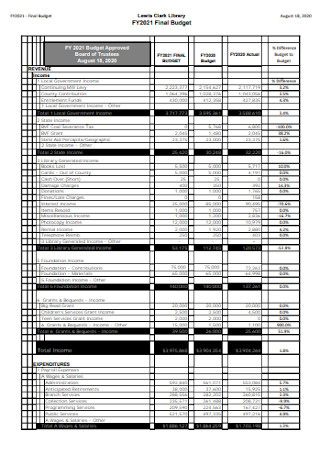
Library Operating Budget Template
download now -
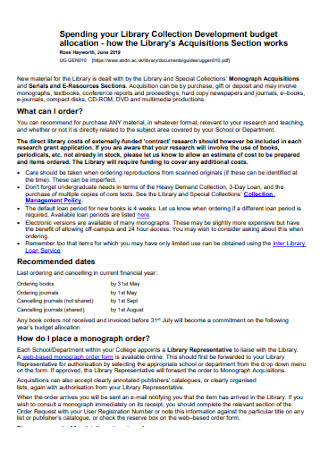
Library Collection Development Budget
download now -

College Library Budget
download now -
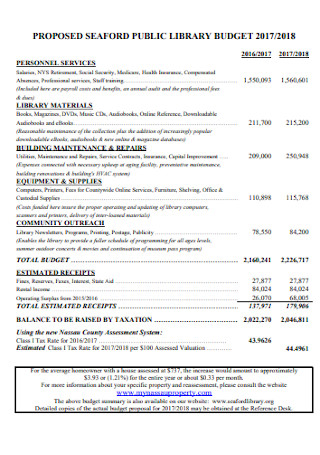
Public Library Budget Template
download now -
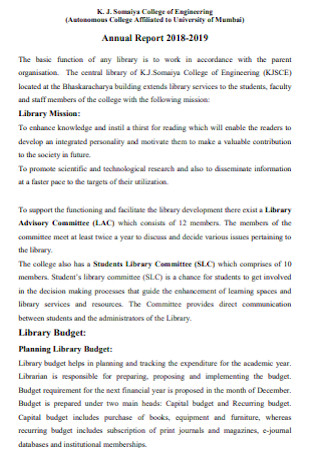
College Annual Budget
download now -

Library Estimated Maximum Budget
download now -
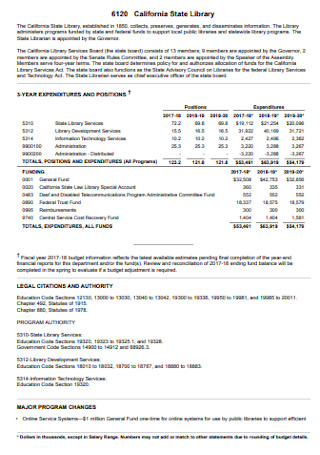
State Library Budget Template
download now -
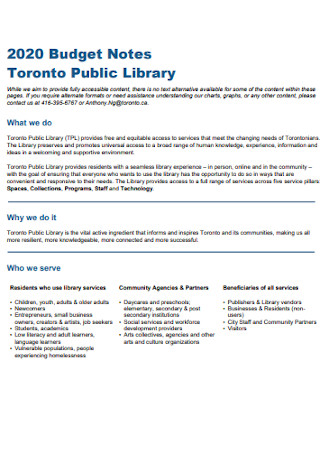
Sample Public Library Budget
download now -
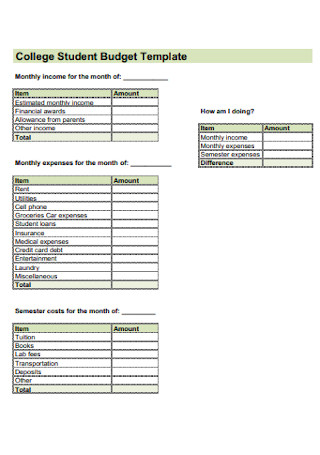
College Student Budget Template
download now -
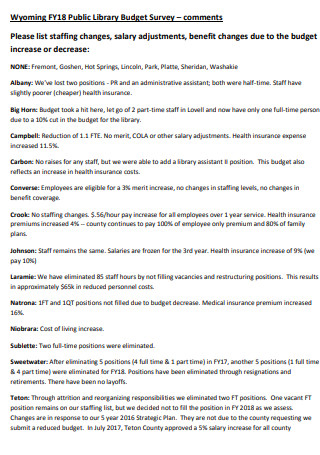
Public Library Survey Budget
download now -
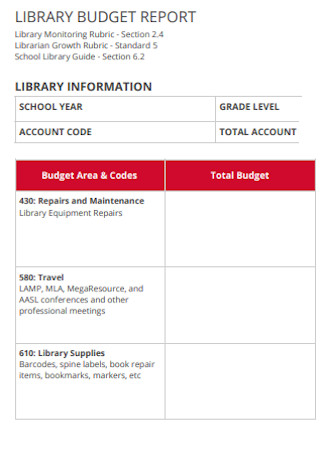
Library Budget Report Template
download now -

Sample of Minimal Library Budget
download now -
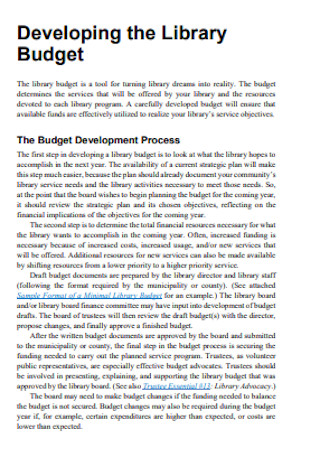
Library Developing Budget
download now -
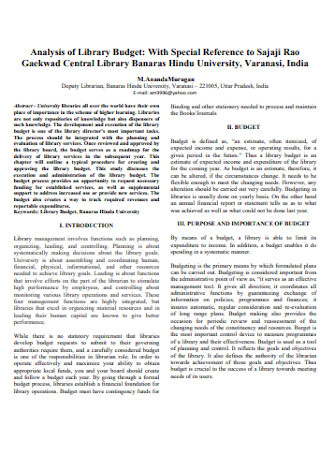
Analysis of Library Budget
download now -

Academic Library Budget
download now -

Academic Library Budget Example
download now -
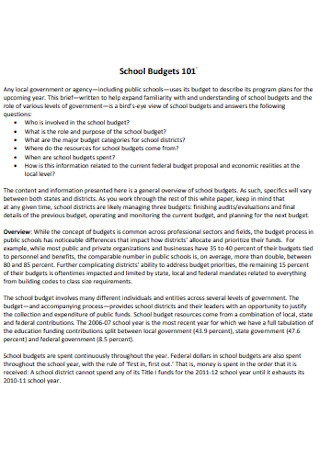
School Association Budgets
download now -
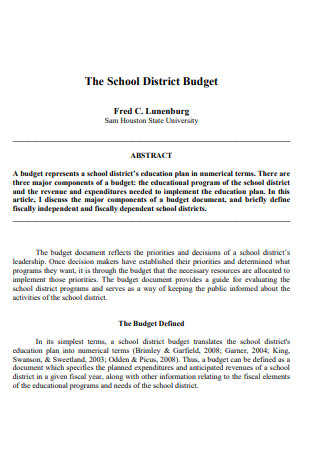
School District Budget
download now -
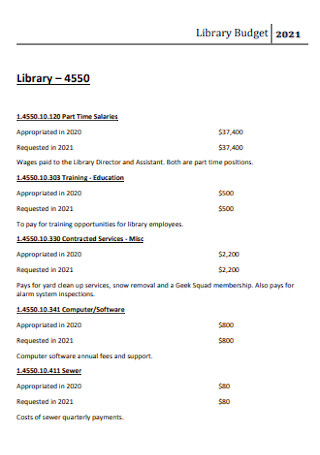
Library Training Budget
download now -

Library Budget Votes Example
download now -
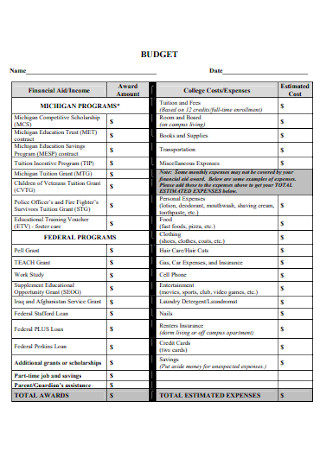
College Expenses Budget
download now -
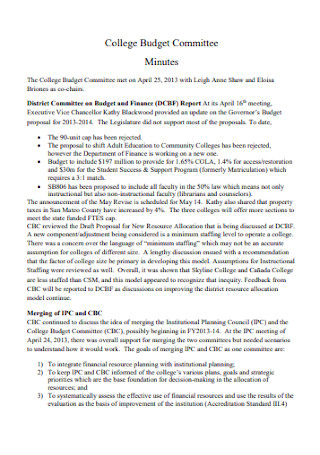
College Committee Budget Template
download now -
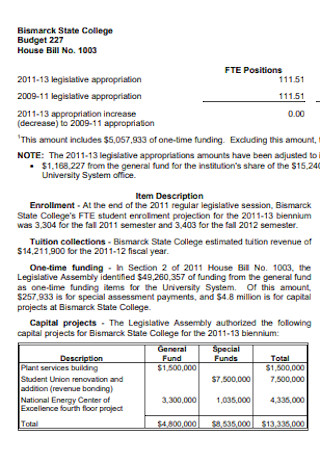
State College Library Budget
download now -

Library District Annual Budget
download now -
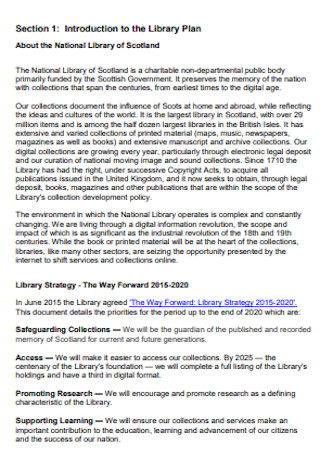
Library Plan Budget
download now -
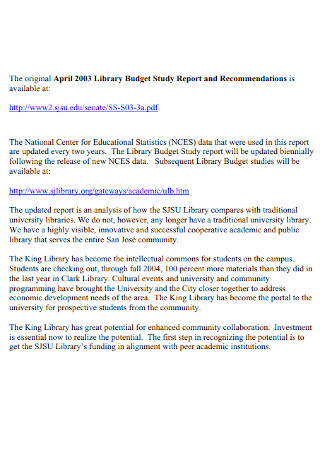
Library Budget Study Report
download now -
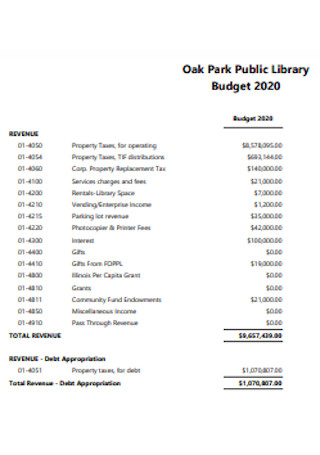
Public Library Yearly Budget
download now -
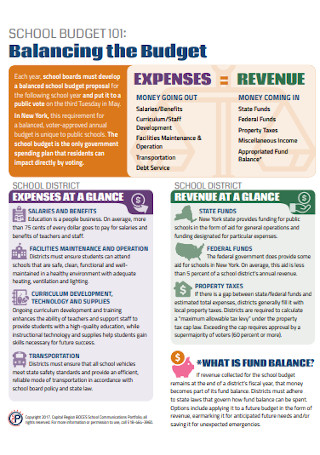
School Balancing Budget
download now -
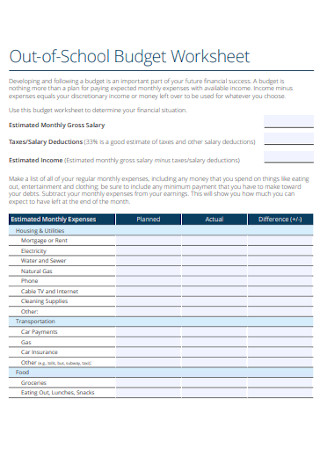
Out of School Budget Worksheet
download now -
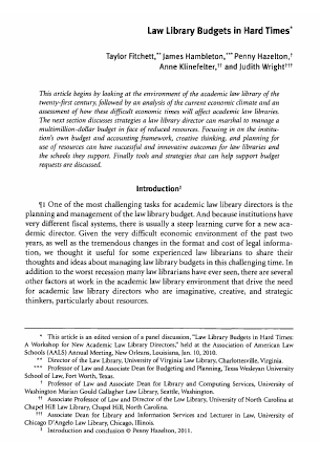
Law Library Budgets
download now -
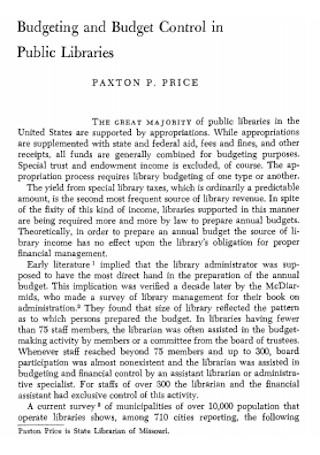
Budget Control in Public Libraries
download now -
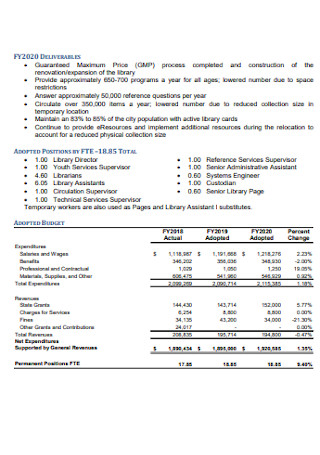
Department of Library Service Budget
download now -
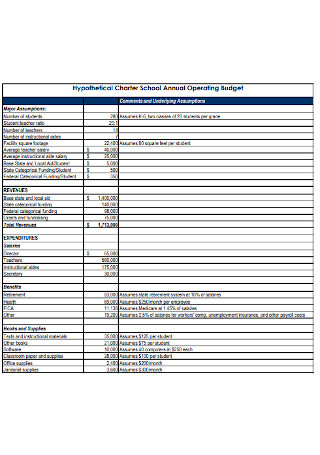
School Annual Operating Budget
download now -
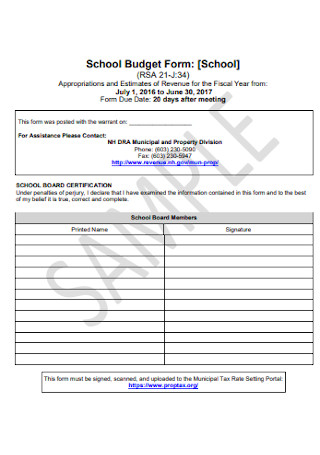
School Budget Form
download now -
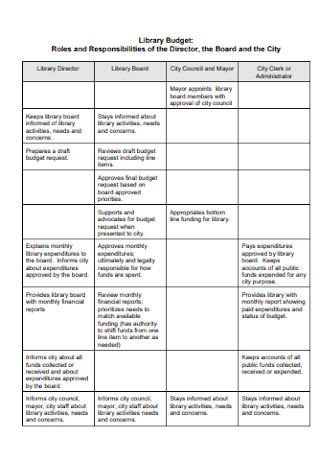
City Library Budget
download now -
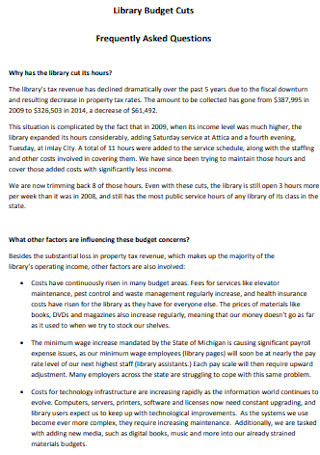
Basic Library Budget
download now -
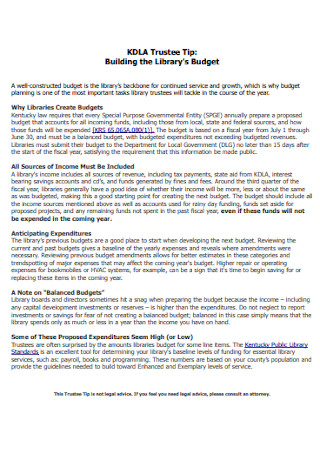
Building the Librarys Budget
download now -

Public Schools Budget
download now -
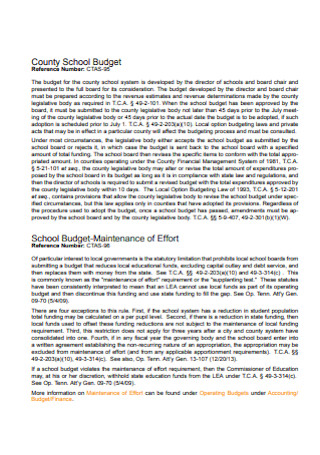
County School Budget
download now[/ns_li -
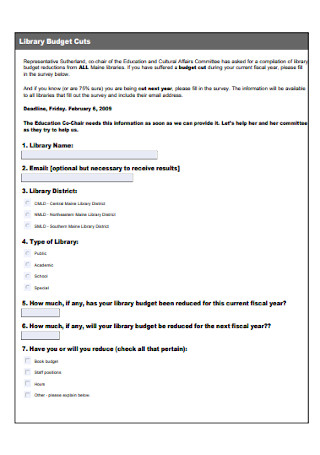
Simple Library Budget
download now -
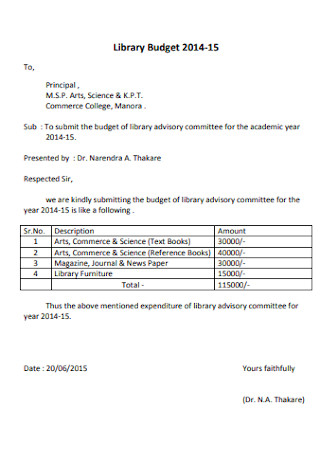
Library Budget Format
download now -
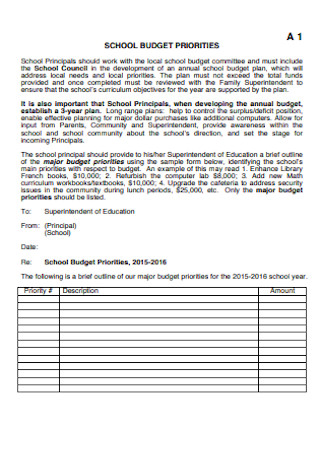
School Budget Priorates Template
download now -
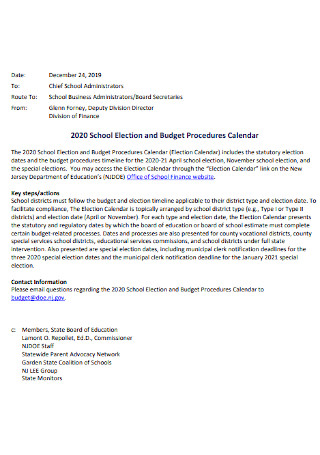
School Election and Budget
download now -
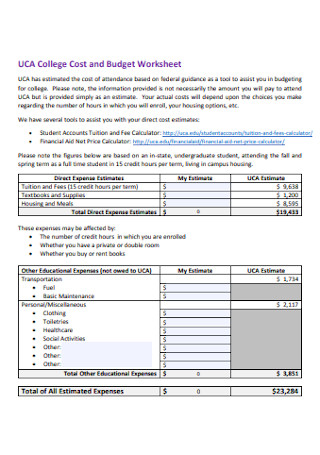
College Budget Worksheet
download now -
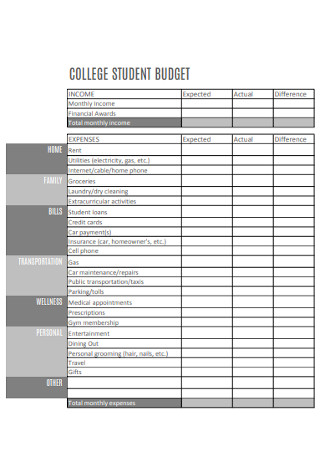
College Student Budget
download now -
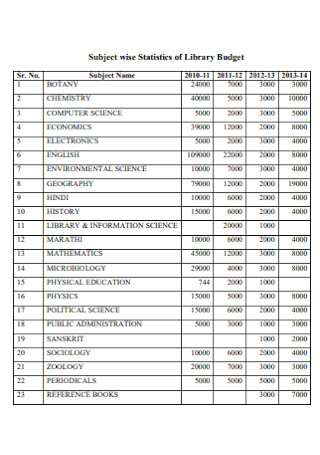
Subject wise Statistics of Library Budget
download now -
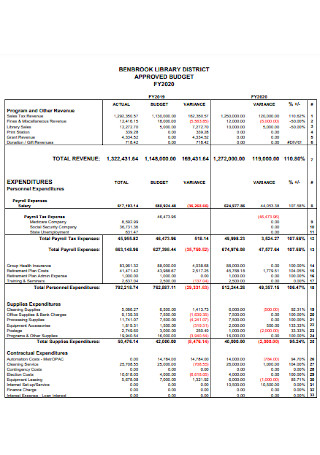
Library District Approved Budget
download now -
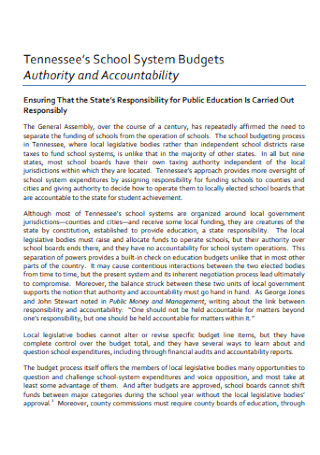
School System Budgets
download now -
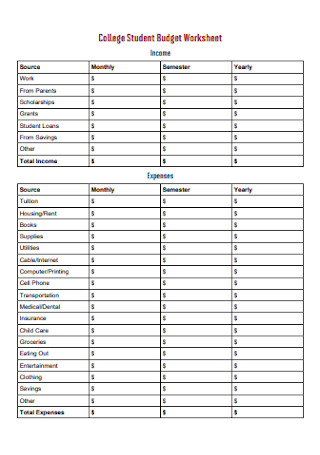
College Student Budget Worksheet
download now
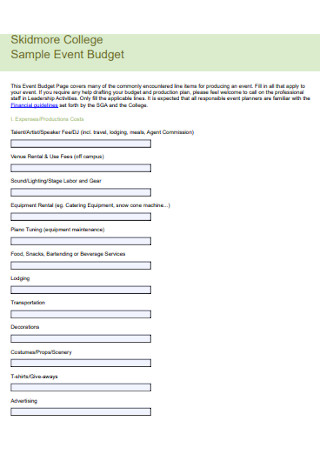
Sample College Event Budget
download nowFREE Library Budget s to Download
50+ Sample Library Budgets
What Is a Library Budget?
Why Should There Be a Library Budget?
The Library Budgeting Process: An Introduction
How to Create a Library Budget
FAQs
What are the four important library budget characteristics?
What are the types of library budget?
How much money do libraries spend on books?
What Is a Library Budget?
A library budget is the official budget plan and process on how to run the library expenses. It not only prepares you on how much the possible expenses involved are but also on how to distribute and utilize such finances. The library budget also confirms if the finances used come from the school budget, local government fund, or perhaps, personal finance. And a meticulously developed budget is crucial to ensure your library has enough funds available to run the business and ensure that the library’s goals will be met in the end.
According to Statista’s 2016 research survey, the American academic library directors and deans used 61.5% of their library materials budget on online databases and digital journals.
Why Should There Be a Library Budget?
You already know what a library budget is for but why is it important in the first place? Here are some of the top reasons why library budgeting is essential for libraries in general:
Effective Budget Planning
Just like how there is a need to set a personal budget for a better way of living, you also need a library budget if you are running a library. Effective budget plans for your library will help a lot in meeting the library’s objectives and goals, sorting the library’s budgeting priorities, and ensuring that the library stays long in business. So without the budget, who knows how long your library lasts.
Seamless Budget Tracking
A quintessential feature of the library budget is how it is used to track expenses smoothly. So when there is a need to conduct an audit report on the library’s expenses, you can easily report and track the details according to what is recorded in the library budget. It is normal for library directors and stakeholders to question how the money is spent for a library as it involves different costs. Hence, the library budget makes the spending transparent and avoid possible monetary fraud.
Provides Budgeting Solutions
Upon tracking and monitoring different elements of the library budget, it is possible to find some problems. An example is when there are library budget cuts during a pandemic. Or perhaps, some funds from the government to fund the public library were missing. Such examples help you identify the problem. But the process does not simply stop there. You can identify the appropriate corrective action plan later on to fix the issue.
Keep Up with Trends and Necessary Changes
Any business is constantly changing. The same thing applies to libraries. And you can identify potential trends and necessary alterations to improve your library with the data recorded in the library budget. An example is how many libraries focused their budget on online resources in 2016. According to Statista, American academic library directors and deans utilized 61.5% of their library materials budget on digital databases and journals.
Detailed and Accurate Details
The document or spreadsheet used as your library budget provides you with loads of details. It identifies different categories of expenses such as personnel, utilities, programs, equipment, and more. And the best part is you will not only learn numerous details but also precise data. Accurate details are important particularly in noting down the numbers of the budget. Thus, you can rely on the library budget as your library’s budget calculator too.
The Library Budgeting Process: An Introduction
Making a library budget involves a process. It is not just about calculating how much the expenses are for your budget as it goes down from planning down to approval. And for a full introduction of the library budgeting process, these are the components you need:
How to Create a Library Budget
Now that you know a lot about what a library budget is, why it is important, and how the library budgeting process goes, it is time for the meat of the article which is to make your own library budget. You will surely come up with an effective and efficient library budget when you follow these five steps:
-
Step 1: Conduct Planning and Analysis
You need to start with the basic plan and cost analysis first. Planning is where you finalize what your library wishes to accomplish in a year. And for every service or activity listed, you insert their corresponding costs. And it is through cost analysis that you can identify the right amounts for the different items in your library budget. Also, this is the right time to review your library’s sources of funding as they will be part of the library budget’s calculations.
-
Step 2: Select a Sample Library Budget Template
Rather than starting from a blank document and not knowing where to start, you will be easily guided with a sample template on hand to make the library budget. There are 18+ sample library budget templates in this article so choose a template you like to optimize. You may opt for a school library budget sample, college library marketing budget request sample, public library budget sample, public library materials budget allocation sample, and so much more. The best part is they are premade so you can only focus on editing your work, adding the needed data, and working on the finishing details.
-
Step 3: Use the Appropriate Labels and Figures
A library budget is not simply written in a long paragraph form. It only has to mention specific keywords and calculations. And part of what makes your data organized despite not writing in complete and long sentences is through labeling and classifying your library budget. That means you use appropriate labels and figures to organize your information. An example is to add a table with rows mentioning the library staff budget, utility budget, contractual budget, materials budget, supplies budget, furniture budget, program budget, hospitality budget, and program budget. Meanwhile, the columns mark the budget amounts such as the year to date (YTD) budget, current period expenditures, YTD expenditures, budget variance, and % budget remaining. Other visual organizers you can use are graphs and organizational charts.
-
Step 4: Keep the Document Detailed yet Straightforward
It is helpful for the library budget to be detailed enough so lesser questions would be asked regarding the library expenses plan. But not to the point where you put so many details that even irrelevant ones were included. Be direct with your message since what matters the most is that whoever reads the library budget document will understand its content easily. So balance the information if it is straightforward and just enough.
-
Step 5: Follow the Library Budget Development Process
Your final project is to make sure you followed the entire process of developing the library budget. You were already introduced to the library budgeting process from the budgeting goals and objectives down to the budget approval. Be sure not to miss any step or the outcome might not go according to plan. And that is how you create a stellar library budget.
FAQs
What are the four important library budget characteristics?
According to Maine.gov, the essential library budget characteristics are clarity, accuracy, consistency, and comprehensiveness. So make sure your library budget meets those qualities.
What are the types of library budget?
Library budget has three main types. These are the line item and program budget, operating vs. capital costs, and revenue vs. expenditures.
How much money do libraries spend on books?
Inside Higher Ed reported that libraries spent around $3.61 million on information books or materials in 2017 alone.
It is no surprise that a library budget either makes or breaks libraries. Every library director even has a responsibility to manage the library’s budgeting process for long life in business. And the library budget must be carefully created so that library objectives go exactly as planned and that no misuse of the budget will be implemented. Thanks to professionally made library budget samples, anyone’s dream library can happen. Download a sample now!
